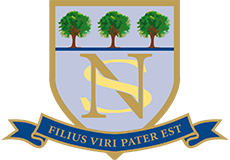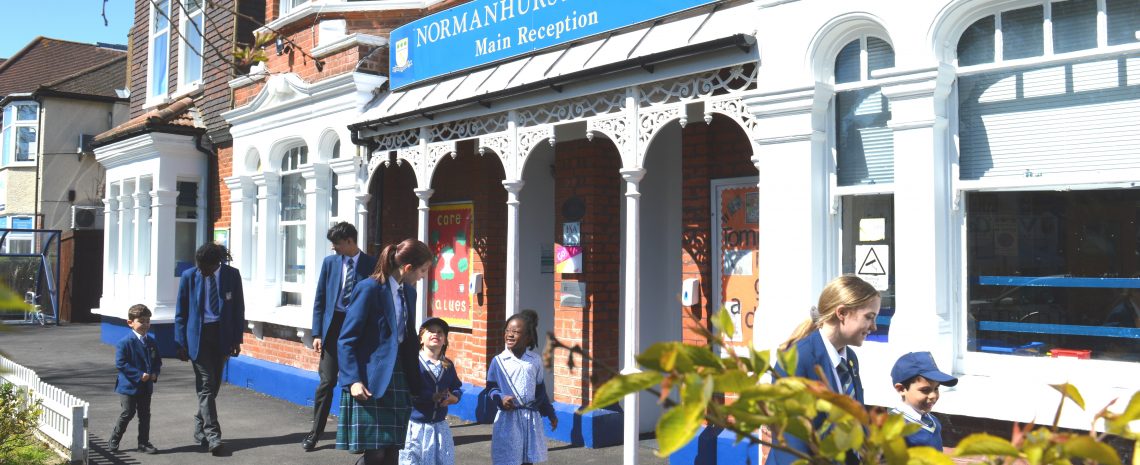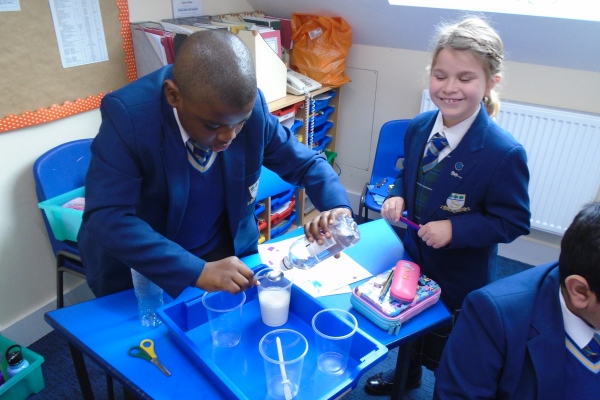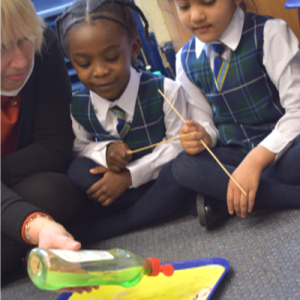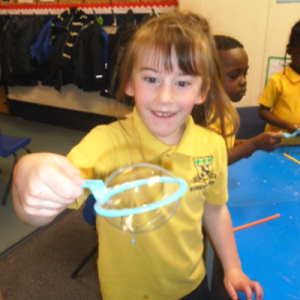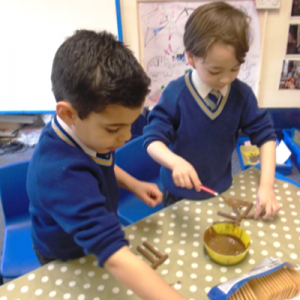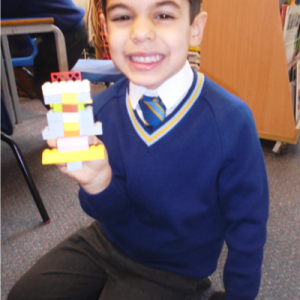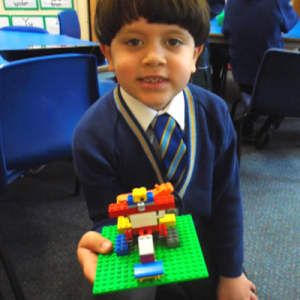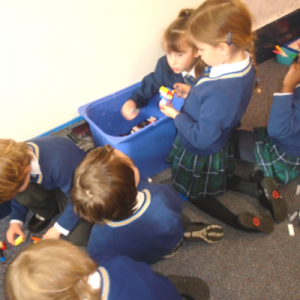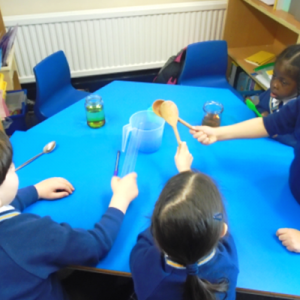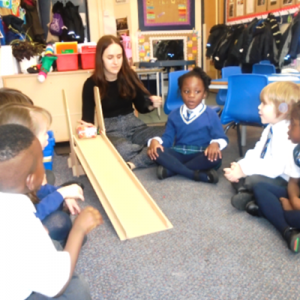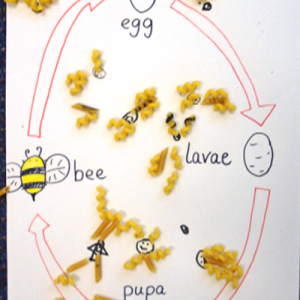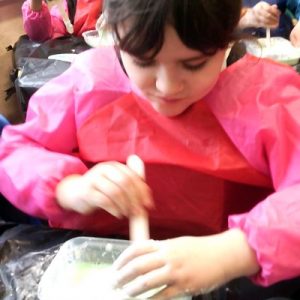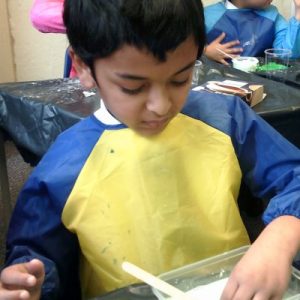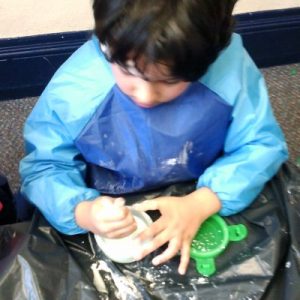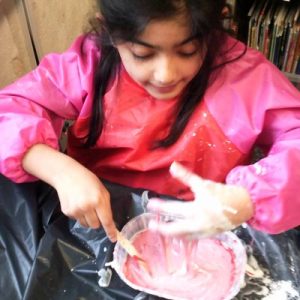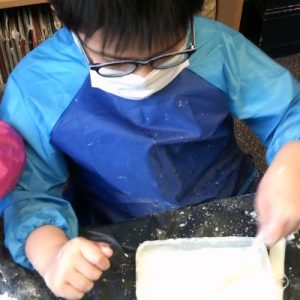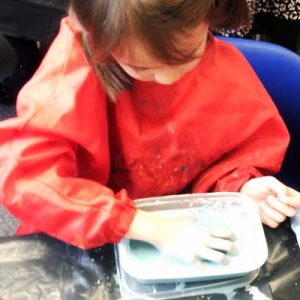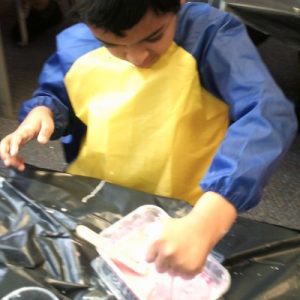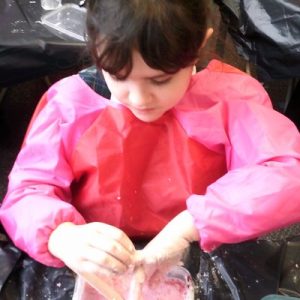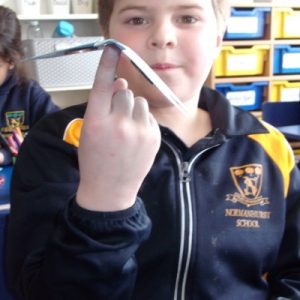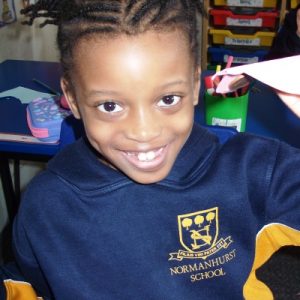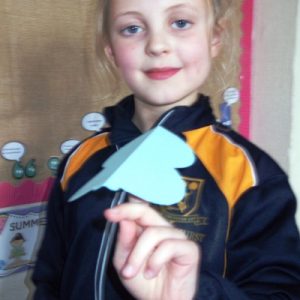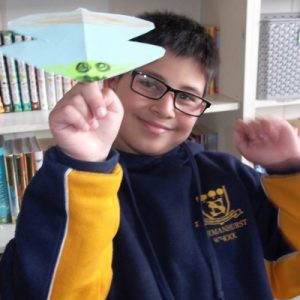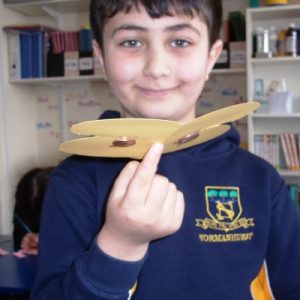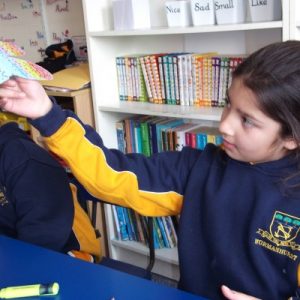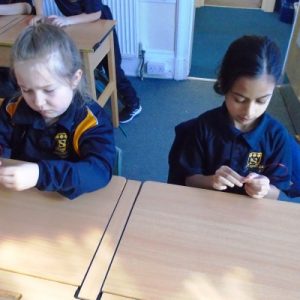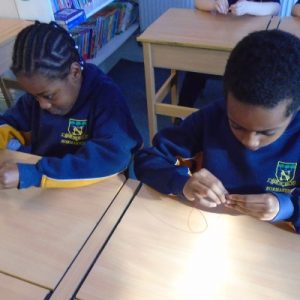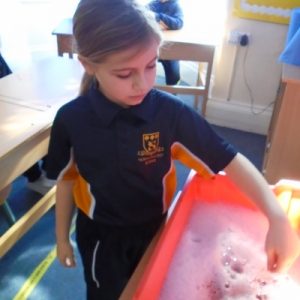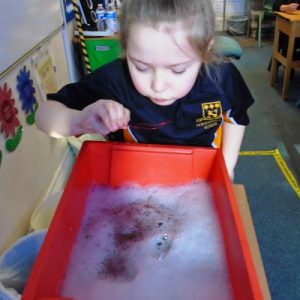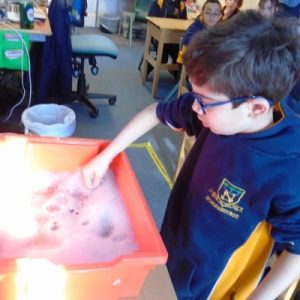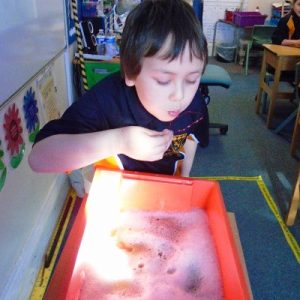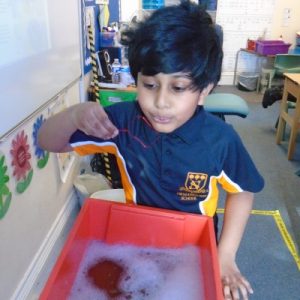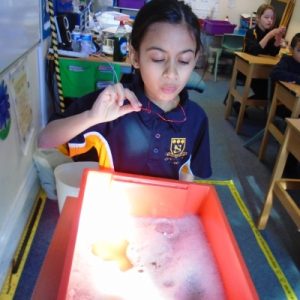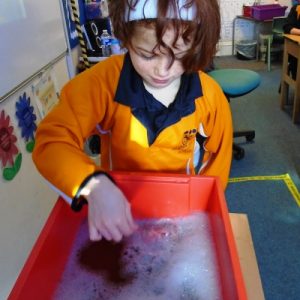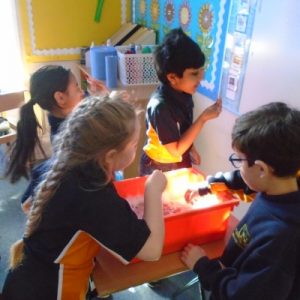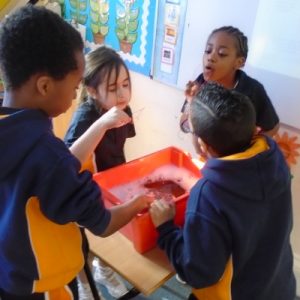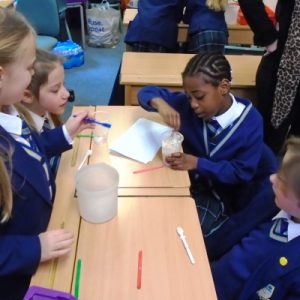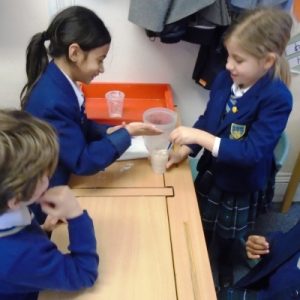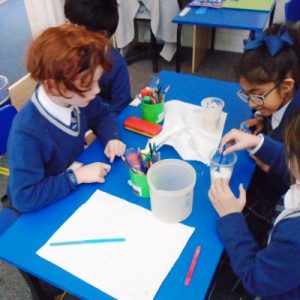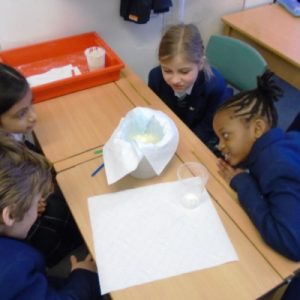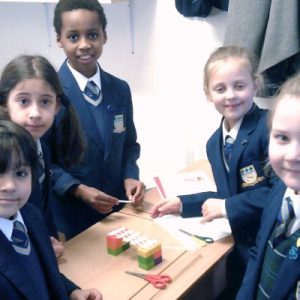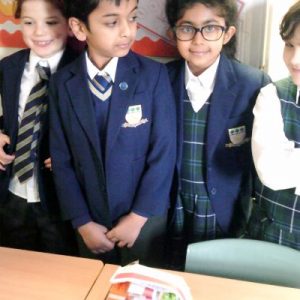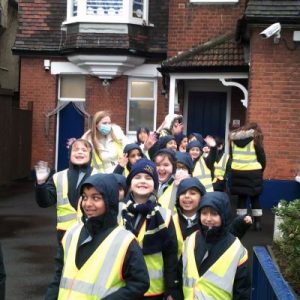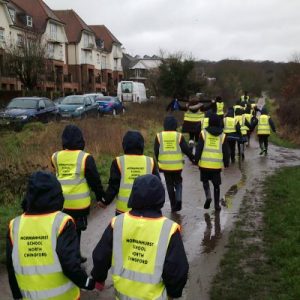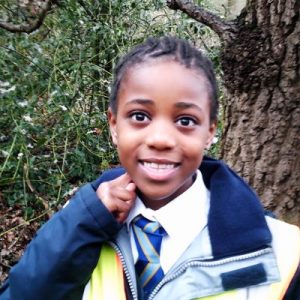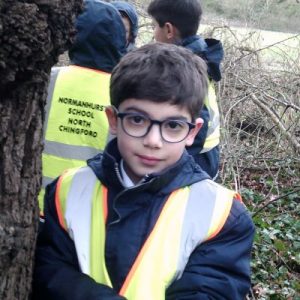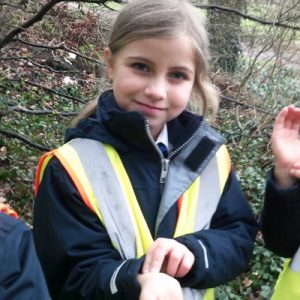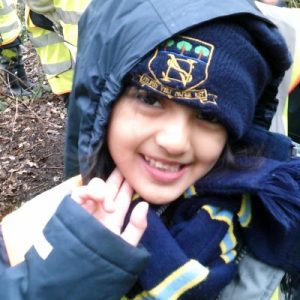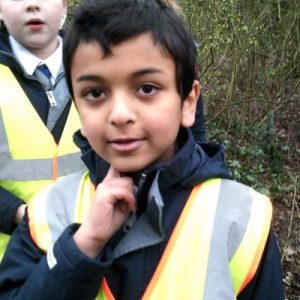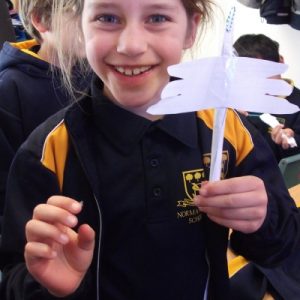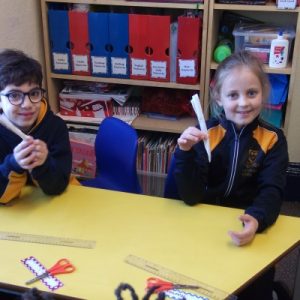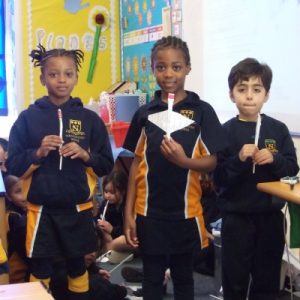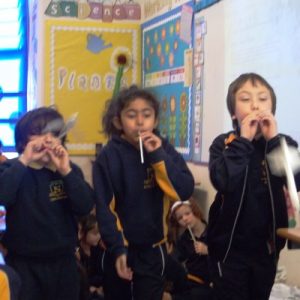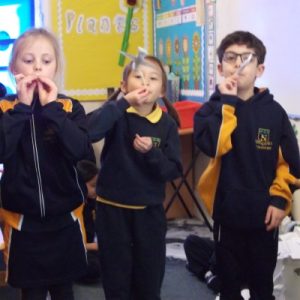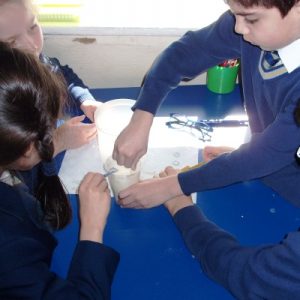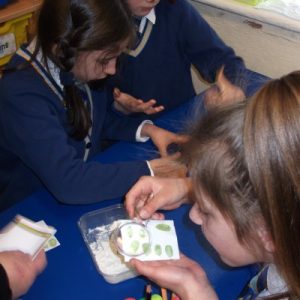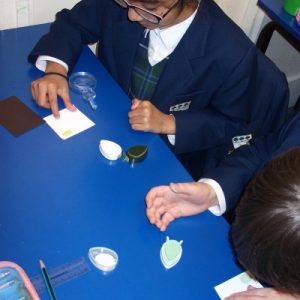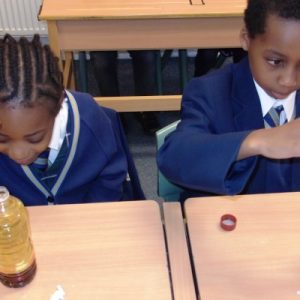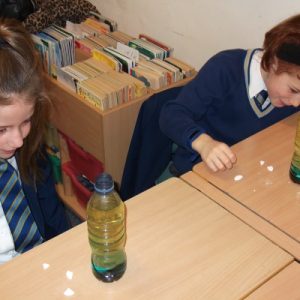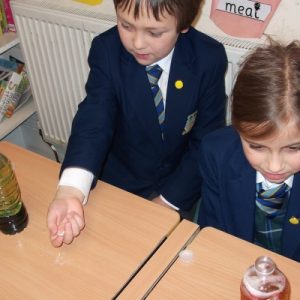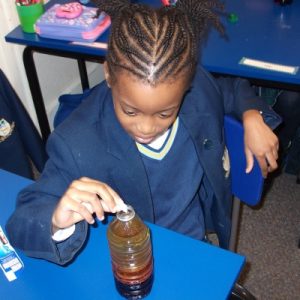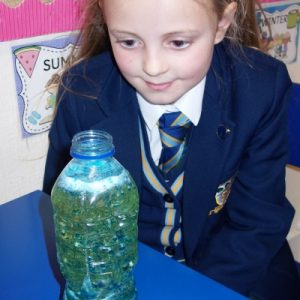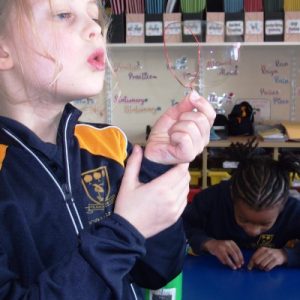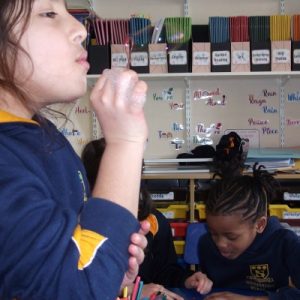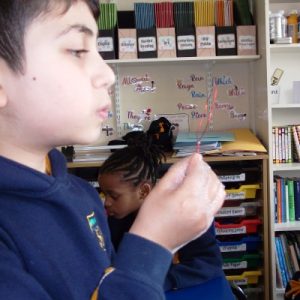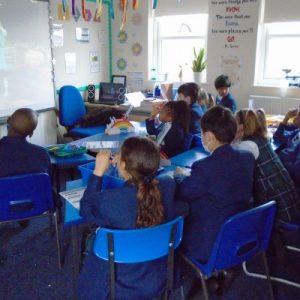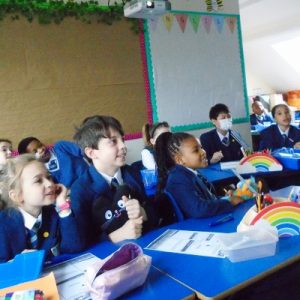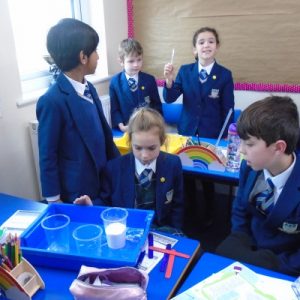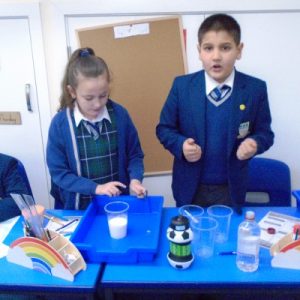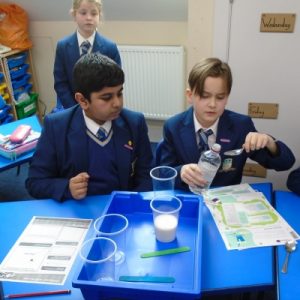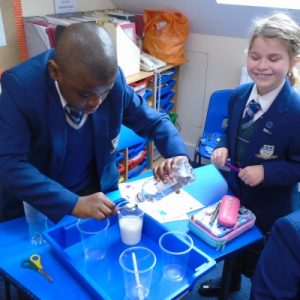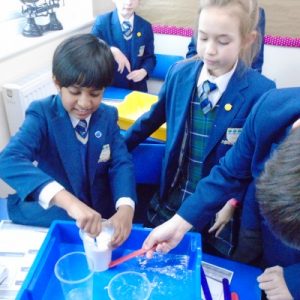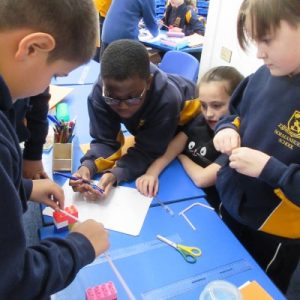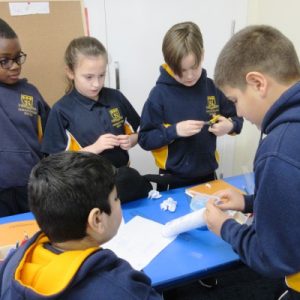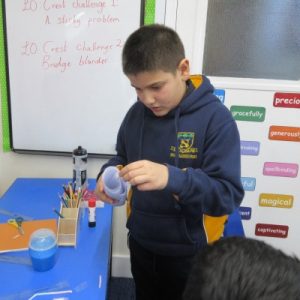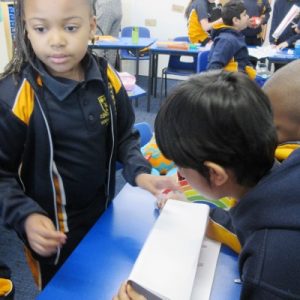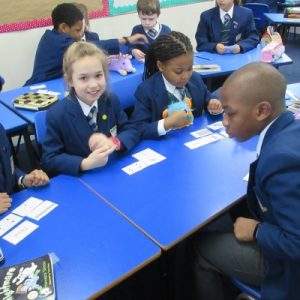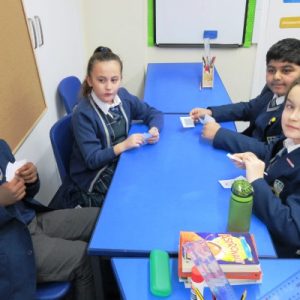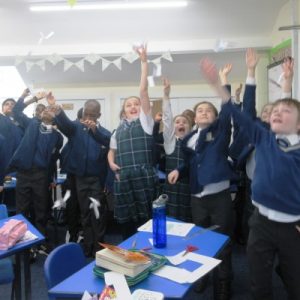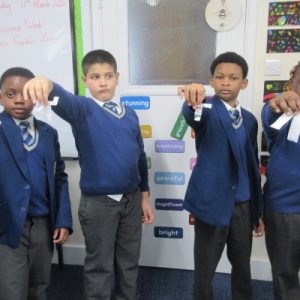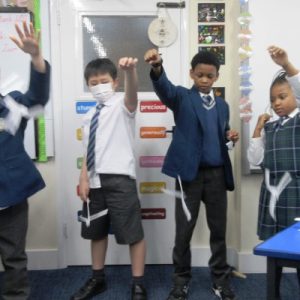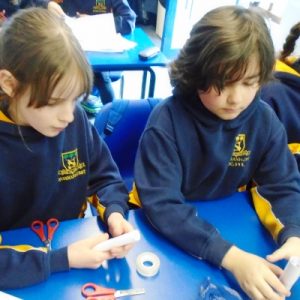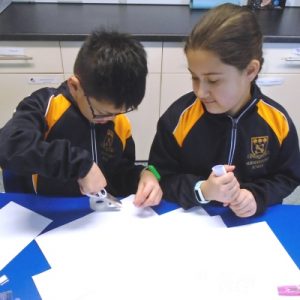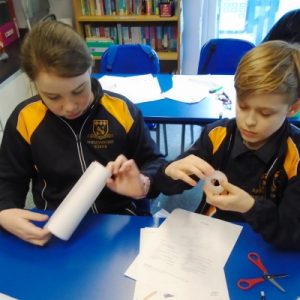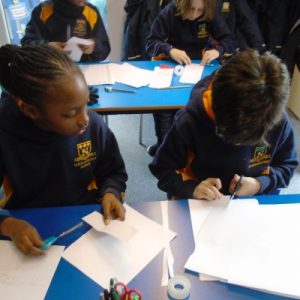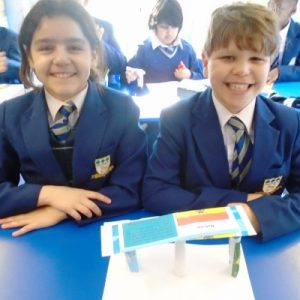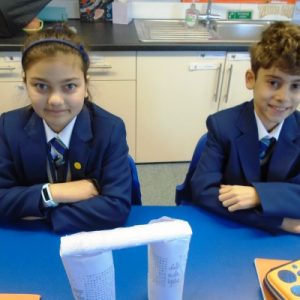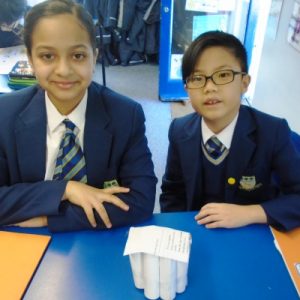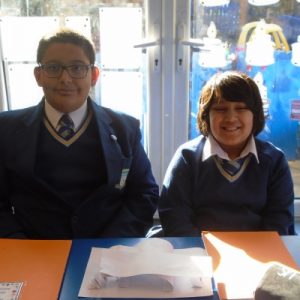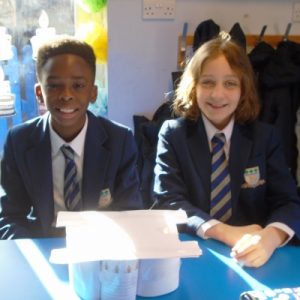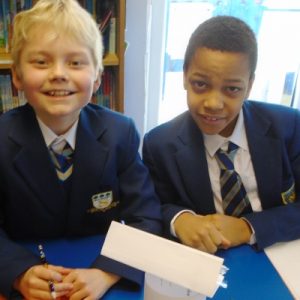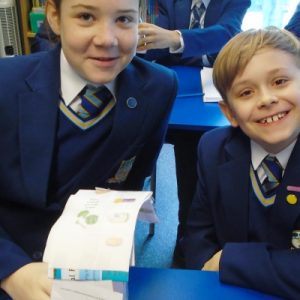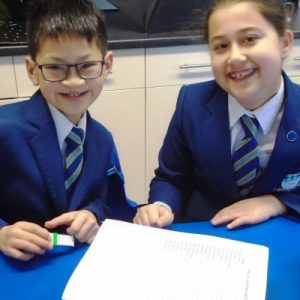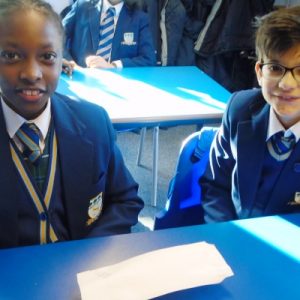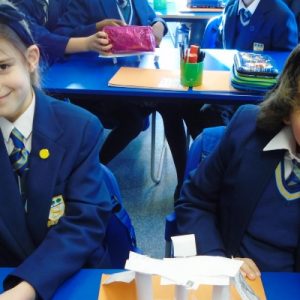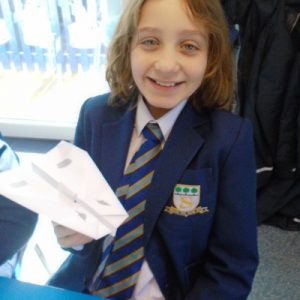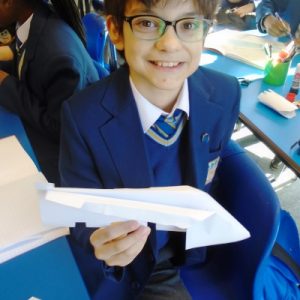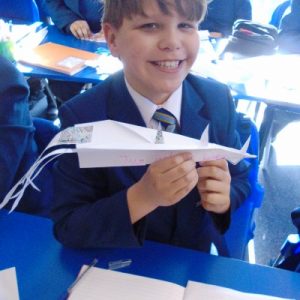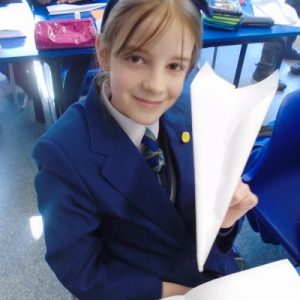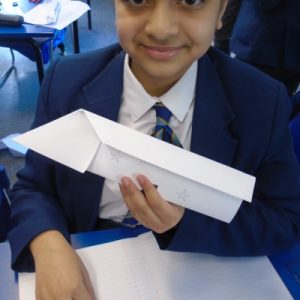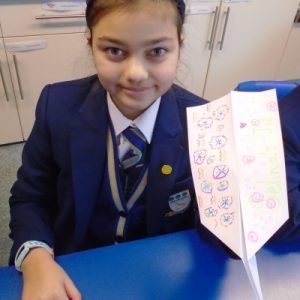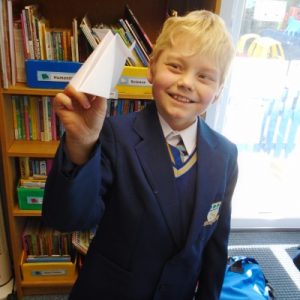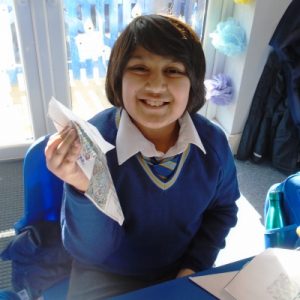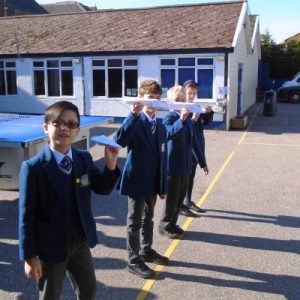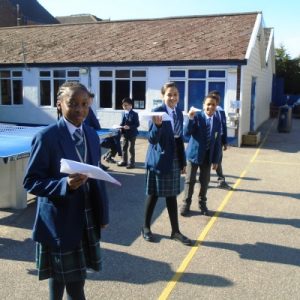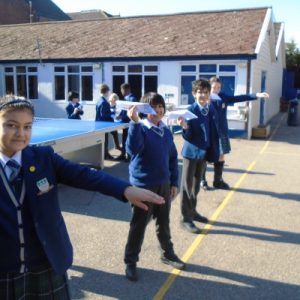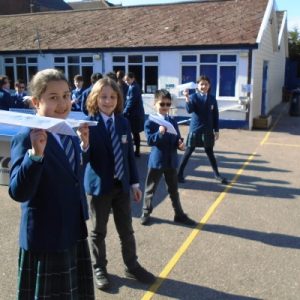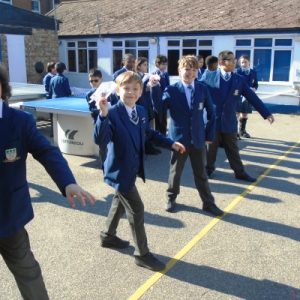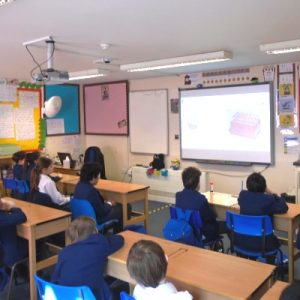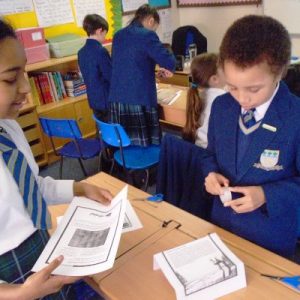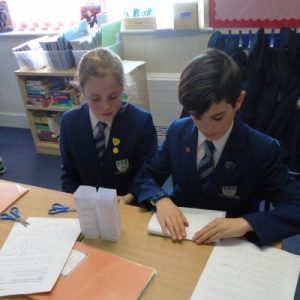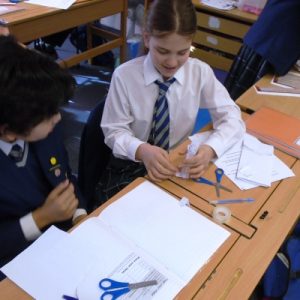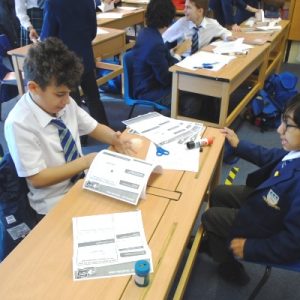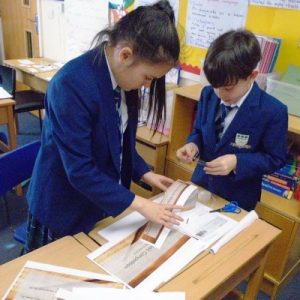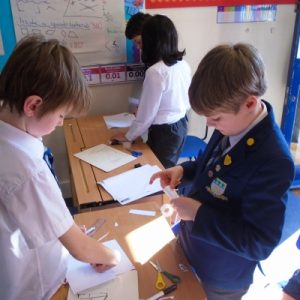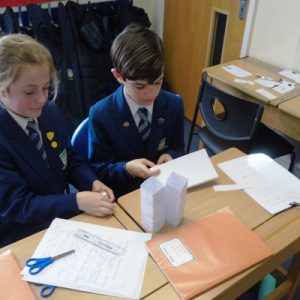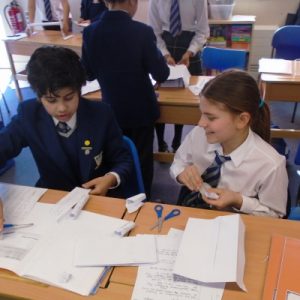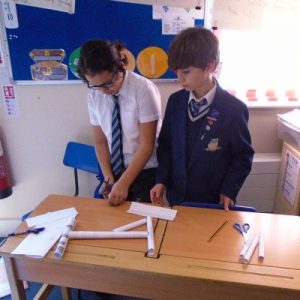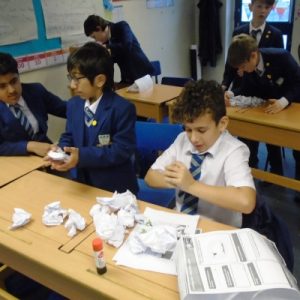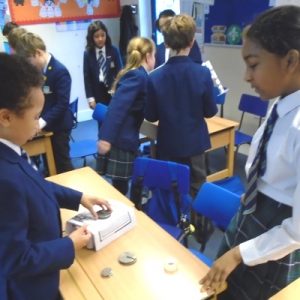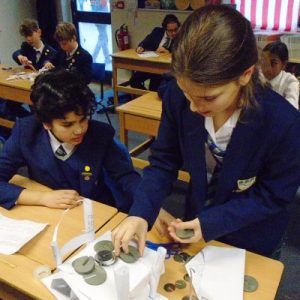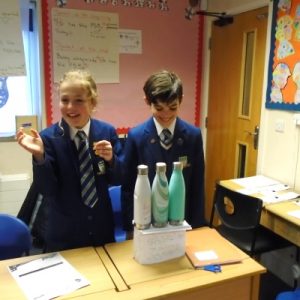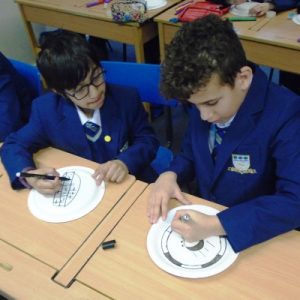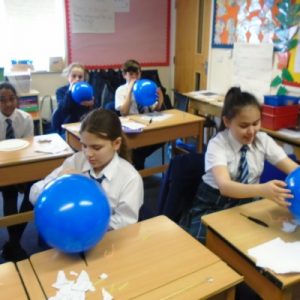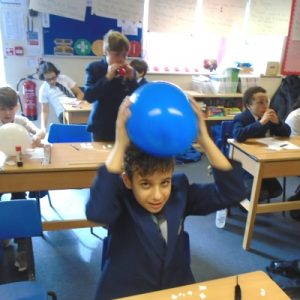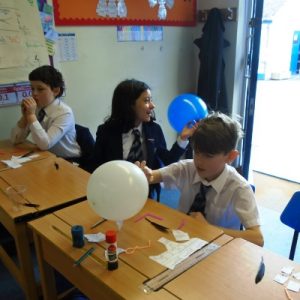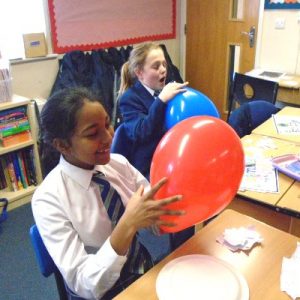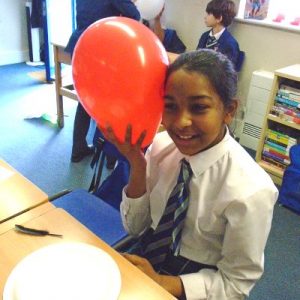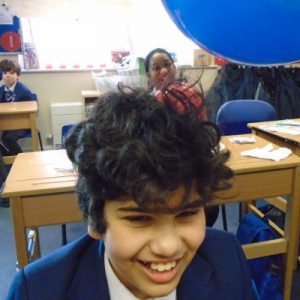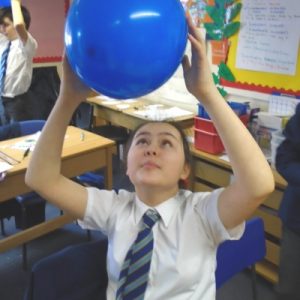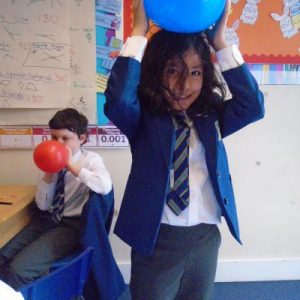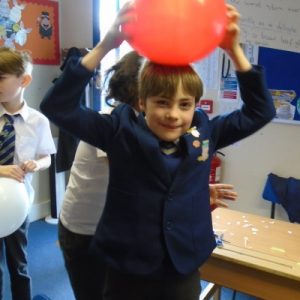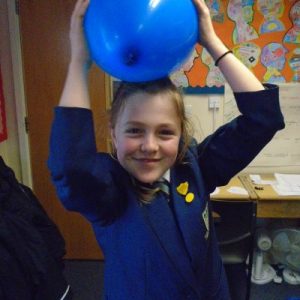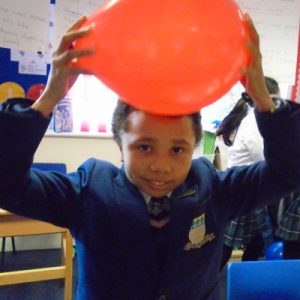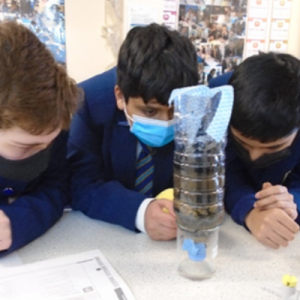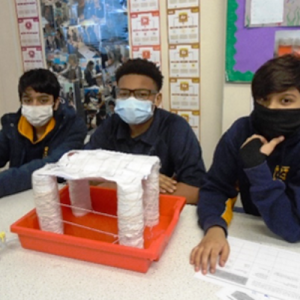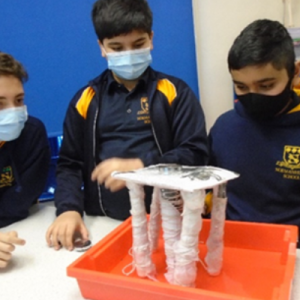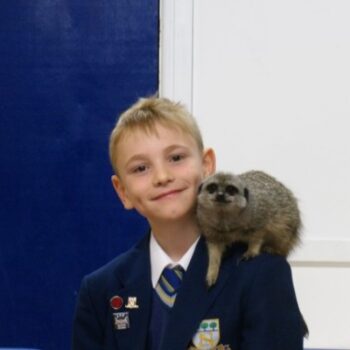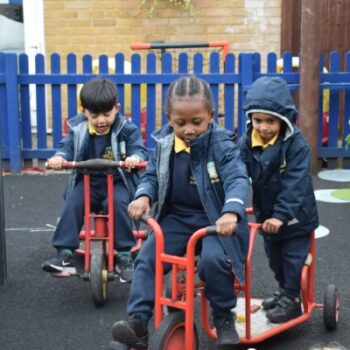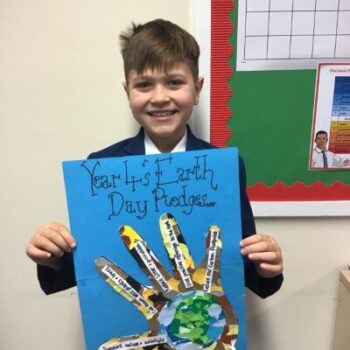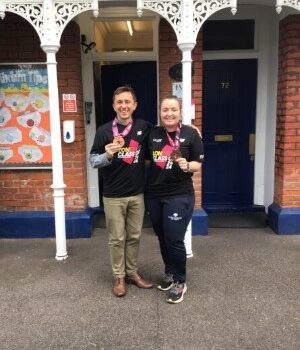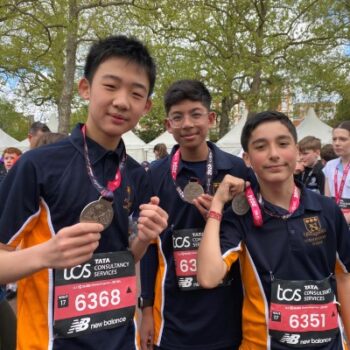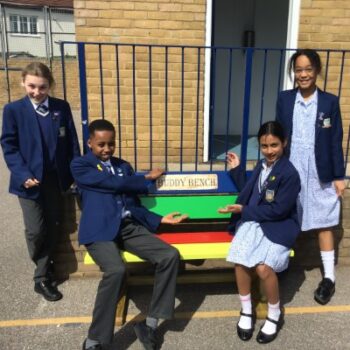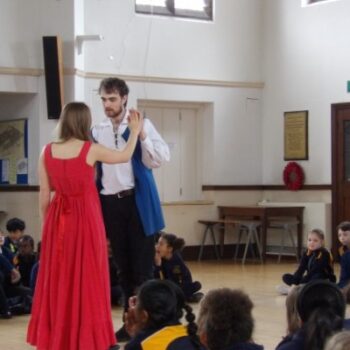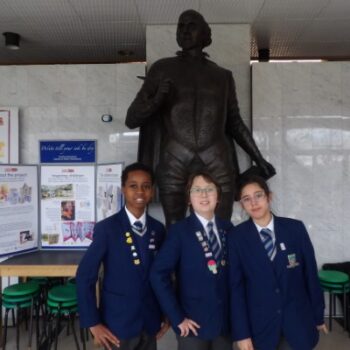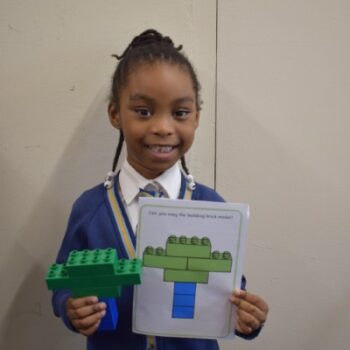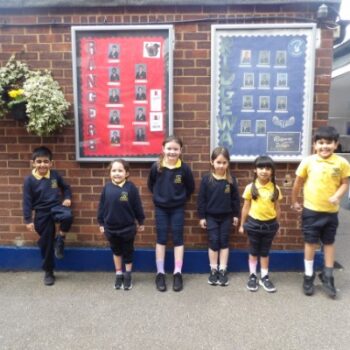British Science Week this year ran from 8 to 15 March, and so coincided with the week that the students came back in to school. The theme was ‘Innovating for the Future’, and the students were welcomed back on site with a whole host of activities and competitions.
Kindergarten:
In Kindergarten, Science Week saw the children taking part in some investigating fun. The simple science experiments included finding out how soap cleans our hands. Pupils used glitter to represent the germs and watched how the soap made the germs quickly move away.
There was a rain cloud made of crazy foam and the children watched as the coloured rain made its way through.
Everyone enjoyed the dunking biscuit challenge: how long can your biscuit stay in the water before breaking up. The children used both warm and cold water and were able to share their thoughts and ideas on the outcomes.
Finally they added food colouring to milk, and the children loved watching the colours swirl and twirl and mix together to create new ones. The surprise came when they added soap and the colours shot to the sides of the tray; as the children commented “It’s like magic!”.
The highlight of the week was to be asked to visit the science lab where the children watched and took part in a series of experiments led by our senior pupils. We hope we have inspired some budding scientists in Kindergarten.
Reception:
Pupils explored what coloured materials they could see the best in the dark and discussed the word ‘reflective’. They also explored blowing bubbles, seeing if they could make different sized bubbles and explored blowing quickly and slowly and also trying to catch the bubbles.
Reception learnt about a Scientist called Eva Crane who studied bees. They talked about the ‘life cycle of the bee’ and made some bees using pasta.
One morning the challenge was to create a structure using biscuits, chocolate fingers and melted chocolate as the glue. Everyone was very creative and all structures were different. We enjoyed seeing the melted chocolate turn from a liquid to a solid and to be able to pick up the structures.
They got out a ramp to predict and test which tin cans would roll the furthest. The tin of sweetcorn got the most votes but it was the baked beans that travelled the furthest. Children then tested some of their favourite toys to see how far they would travel and enjoyed putting the ramp at different angles to see the difference that made.
They also had the opportunity to explore making music with different sized glasses with different amounts of water and built structures using Lego.
Year 1:
Year 1 had a brilliant week and enjoyed working in a variety of different ways and with different pupils. Some of the experiments were done individually, others in mixed groups or with a partner.
All pupils entered the Baylab competition and the standard of entries received was extremely high. All Year 1 pupils were awarded their Crest Awards Passport and certificate for completing an amazing ten experiments.
Some highlights of the week were the volcanoes the children made with a partner. The children were able to explain how the baking soda reacted with the vinegar to cause a chemical reaction and that the carbon dioxide was responsible for all the fizzing and bubbling during the ‘eruption’.
Another favourite experiment of the week was the paper towel colour mixing experiment. This created the colour purple in the middle of the paper towels once the red colour in one cup joined with the blue coloured water in the second cup. Year One enjoyed growing cress and many ate their cress at home once it finished growing.
All pupils wrote a biography about Marie Curie’s life and learned that she won the Noble Prize for Physics and Scientific excellence twice.
Year 1 went into the forest on one of the windiest days of the year and Charles proved to be particularly expert at using a litter picker. All of Year 1 had an opportunity to help the community by using litter pickers to collect some of the paper and plastic litter in the forest. To end the week, pupils had fun with bubbles and a paper aeroplane competition.
Year 2:
Year 2 had a fun-filled week of Science investigations. On the Monday, the children were challenged with the task to build a bridge using only paper, Lego blocks, straws and Sellotape. They then investigated how strong their team’s bridge structure was by testing how many blocks it held up.
Pupils also ventured out to the forest to investigate the different effects that exercise has on our body. Later in the week, Year 2 had the chance to make their own cornflour slime. The children were amazed at how their mixtures appeared to be a liquid until they squeezed it in their hands. The highlight of the week for many of the children was making their own lava lamps, which they were amazed to watch glow in the dark. Overall, the children thoroughly enjoyed their Science Week activities and are already looking forward to next year!
Year 3:
Year 3 had a fantastic action packed Science week, exploring a series of different experiments and investigations. During this week, Year 3 had the opportunity to participate in the CREST Challenge award, which they particularly enjoyed, they loved that they were able to receive a CREST award passport with lots of Science stickers.
Year 3 had the opportunity to make their own glue in teams. Poppy said “This is really cool, I never knew you could make glue” the children were very surprised to find that the glue which they made with vinegar was the strongest. Another experiment that the children were challenged to, was ‘Bridge Blunder’ this activity saw the children developing their team work skills to build a secure and sturdy bridge from strips of paper, 4 plastic straws and Sellotape. Alicia was very pleased with the bridge that her team built and said ‘I am very surprised how strong our bridge is’
On Wednesday, Year 3 were lucky enough to have a zoom lessons from the Benjamin Franklin museum. The children enjoyed how knowledgeable and interactive the lesson was, and saw some fantastic experiments including static electricity.
Another activity involved the children testing their pulse and their heart beat. As a year group, Year 3 went for a walk to Epping Forest and carried out a series of pulse raising exercises, including star jumps, running on the spot and high knees. The children were very surprised to realise how fast their hearts were beating after such short bursts of exercise. Some of the children were even able to explain why our hearts beat faster after exercise, Freddie explained “Our hearts beat faster because our body and muscles need more oxygen to be able to work properly”.
Overall Year 3 had a fantastic week completing 8 experiments in total:
Bridge blunder
Lava Lamps
Heart pulse raiser
A sticky problem
Balancing butterflies
Fantastic fingerprints
Racing rockets
Blowing bubbles
Year 4:
During Science Week, Year 4 completed lots of amazing activities! They especially enjoyed participating in the CREST experiments. Aarush said that his favourite experiment was creating our own glue, “because it was SO fun, and we got to create something new!”
Pupils also had a go at creating their own bridge using just 12 pieces of paper, 15cm of Sellotape, and 4 straws. It was very competitive, and the winning bridge could hold 1lb! They realised during each of these experiment that teamwork is an important element of success.
Another highlight of the week, was the interactive Zooms lessons they took part in. The first was a live farm Zoom, where Year 4 were introduced to some female farmers from Wales. They gave a tour of their farm and discussed how innovation helps them in their daily life. The children were also lucky enough to see some new baby lambs!
The second live lesson was from the Benjamin Franklin Museum in London. During this lesson, pupils were able to see how lightning rods repel lightening from tall buildings and saw some really cool experiments involving static electricity.
Finally, they were given a wonderful presentation by Dr Fonalleras-Marcos, a Gastroenterologist from Barts and the London Hospital. Dr Fonalleras-Marcos led everyone through the amazing links between technology and medicine. They especially enjoyed hearing about the new robots which are used in hospitals.
Overall, Year 4 had an amazing week. We love Science and we cannot wait for next year!
Year 5:
Year 5 have worked hard towards their CREST Award in Science Week and entered many competitions. Some of the activities included experimenting with different aerodynamic forms, powering a clock using lemons, zooming with workers from Benjamin Franklin house to learn about his life and work and researching types of fingerprints and how we are all unique. They have thought about how to improve all their work for the future and what innovative ideas may be yet to come. They also researched Marie Maynard and her work, remember to ask them all about it!
Year 6:
Seniors:
The Year 11 students were given the opportunity to sign up for a ten week online careers mentoring programme run by the STEM Ambassadors and Brightside Mentoring. Several students have expressed an interest and are looking forward to attending.
The senior students also had the opportunity to visit a virtual STEM Careers Fair organised by STEM Learning. The exhibition helped address some common misconceptions and stereotypes that students associate with a career in STEM, with an exposure to diverse employers including Asda, Rolls Royce and the NHS.
Years 7, 8 and 9 had a series of four Science Week themed lessons where they worked collaboratively towards coming up with an innovation that would help cities in 2050 utilise energy sustainably. They also addressed challenges relating to food supply, pollution and land use during these lessons.
The students all responded admirably to the challenge, coming up with several innovative ideas including solar powered charging cases for technology, self-irrigating roof top gardens, superfood kelp farms and connecting up composting.
These pictures were taken during ice breaker activities in which the students constructed sturdy platforms for houses built on flood plains, and water filters.
Following this year’s theme and in an attempt to smash stereotypes about scientists, the Year 10 Triple Science students Olivia, Damon, Hamza and Malachi all came up with noteworthy presentations about a field of science and scientists whose work inspired them.
Science Assembly this year, just like everything else, was very different from what students usually expect. Virtual rather than in person, our Year 10 Triple Science ‘Innovators of the Future’ Lucy and Damon wowed and enthralled our Upper Kindergarten pupils in a video that was then shared with the rest of the school.
The assembly aimed to remind students that science is fun! It does not always need complicated equipment, although sometimes seemingly simple phenomena have complex scientific explanations.

